Nowruz in History
Even today after the lapse of thousands of years, Iranians from all walks of life enthusiastically celebrate the magnificent event regardless of their age, gender, language, race, ethnic or social status.
Nowruz celebrations, beginning on March 21 and lasting for almost two weeks, are deeply rooted in ancient Iranian civilization. The occasion symbolizes an everlasting tradition of a great nation as it coincides with the first day of spring and rebirth of nature with all its beautiful landscapes.
The Almighty God in several verses in the Holy Qur’an has advised man to go to nature and see the signs of His rebirth in the seasons and nature. "Say: Travel in the earth and see how He makes the first creation, then Allah creates the latter creation; surely Allah has power over all things." XXIX.20
Referring to the historical background of Nowruz, some historians believe that natural changes in weather gave rise to the festivities. Some consider it a national festival, while others regard it as a religious ritual.
Zoroastrians believe that the month of Farvardin (the first month of Iranian solar calendar) refers to Farvashis, or spirits, which return to the material world during the last 10 days of the year. Thus, they honor the 10-day period in order to appease the spirits of their deceased ancestors. Many historians express the idea that the Iranian tradition of visiting cemeteries on the last Thursday of the year, which is still performed, may have originated from this belief.
The late Mirza Ali Akbar Dehkhoda, one of the prominent Iranian contemporary researchers and man of letters in his Persian dictionary writes: "The ancient Iranians celebrated a feast called Farvardegan (Farvardyan) that lasted 10 days. Farvardegan was performed at the end of the year and apparently was a mourning ceremony and not a celebration welcoming the rebirth of nature."
The Moravej-ul-Zahab says that during the reign of Jamshid, the legendary king of
The great Iranian epic poet Abulqasem Ferdowsi (940-1020) in his masterpiece "Shahnameh", also Abu Raihan Biruni and the celebrated Iranian poet Hakim Omar Khayyam in his book "Nowruznameh" along with many other classic scholars and Persian poets have attributed the Nowruz Festival to the Iranian king Jamshid.
In ancient times, the feast started on the first day of Farvardin (March 21) but it is unknown how long it lasted. In royal courts, the festivities continued for one month. Even though the Nowruz celebrations are an ancient Iranian custom, the details of it prior to the Achaemenian era are unknown. There is not even a mention of it in the holy book of Zoroastrians, the Avesta. Nothing is known about how the observance harmonized with the religious beliefs of ancient Persians.
There are, however, references to Nowruz celebrations in a book belonging to Sassanid era.
Babylonian works show that Achaemenian kings would sit on the verandah of their palaces during Nowruz celebrations receiving representatives from different regions under their domain. The envoys used to offer precious gifts to the kings. This is evidentially supported by inscriptions at
It is said that the Achaemenian King Darius (B.C. 521-486), visited the
In ancient
Nowruz in Islamic Traditions
In the book "Asma-ul-Alam" written by the Iranian Islamic thinker and philosopher, Allamah Majlesi, he has quoted Imam Sadeq (AS) in a narration as having said that Hazrat Adam (AS) was created in the first day of Farvardin and this day is an auspicious occasion to perform prayers to Almighty Allah for achieving our expectations.
Abdul Samad ibn Ali in a tradition narrates that during Nowruz, a silver plate of `halva', sweets was offered to the Holy Prophet Mohammad (SA). The Prophet asked to which tribe it belonged and what was the occasion? "This is a gift from
During the era of caliphate of Omar ibn Khattab, Hormozan, the Governor of Khuzestan, sent gifts for Imam Ali (AS), Imam Ali asked what the occasion was. His followers replied that it was a Nowruz gift from Iranians. The Imam said, "Make every day Nowruz!"
The choice of Imam Ali (AS) as Othman's successor as caliph, coincided with the celebration of Nowruz. It is astounding that according to some traditions, the first Imam of Shi'as, Imam Ali (AS), was appointed fourth caliph of Muslims on the eve of new Iranian year. Even Allamah Majlessi, one of the greatest Shi'a scholars, in his book "
Prominent Persian Poet, Hakim Omar Khayyam, said that whoever jubilates and enjoys the occasion would spend the whole year in joy. Meanwhile, there is a cornucopia of other legends concerning the beginning of Nowruz all attributed it to the Aryans.
The festival was so glorious and sacred even the most ruthless rulers used to grant general amnesty to captives and prisoners. The dignity of Nowruz is captured as Ahura Mazda on its splendid glory says: "On the day of Farvardin, even the infernal-dwellers return to this world to visit their families."
Nowruz & Social Justice
Spring, Farvardin and Nowruz are symbolic manifestations of the revival of social justice among Iranians as they have always been forerunners of this divine right as the great civilization of
One of the reasons Iranians enthusiastically embraced Islam was that they were seeking social justice and the great Iranian empire could not ignore the splendid slogans including, "Brotherhood, Equality" which was proclaimed by the army of Islam. Many different reports and traditions from researchers, both Eastern and Western, as well as prominent Persian and Arab scholars have embarked on extensive surveys of the festival and the strong desire of Iranians advocating social justice.
During the first two centuries of Islam in
According to historian, George Zeidan, Persians would pay 5,000 to 10,000 silver units for permission to celebrate Nowruz. Iranians strived hard to buy the occasion even though they paid a high price for it. Umayyad rulers hungry for wealth and power sought to strengthen their hegemony, apparently resorting to Islam as a shield to protect their interests.
Nowruz Promotes the Culture of Peace & Prosperity
In the course of history, foreign powers have invaded our homeland, ruled for short or long periods of time and even tried to impose their culture, which was assimilated into the powerful Iranian civilization. As soon as they were defeated, however, their short-lived effects faded leaving only disconnected fragments.
Nowruz, a symbol of traditional resistance, has withstood the sociopolitical effects of foreign dominance and has always carried an everlasting message of peace and prosperity for Iranians, enabling them to preserve their original identity in the face of foreign onslaughts.
The Nowruz Festival has held out against many disastrous events and incursions and the people of
The Nowruz Festival is the most popular celebration in our social history, literature, poetry and the life of the people. The celebrations are also widely commemorated in
On the verge of the new millennium, man has not yet been able to disentangle himself from the web of a historical deadlock. War, racial discrimination, poverty, terrorism, dictatorship, ethnic cleansing, socioeconomic problems and the arms race are still threatening the very fabric of human society.
We should also remember that
On the eve of new Iranian year, the people of
The message of Nowruz is social relationship, solidarity, affinity, happiness, joy, peace and prosperity for humanity, which has been inscribed on
AP/DWN/IS
EMD
MNA

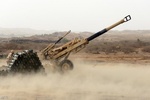

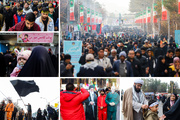

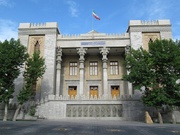

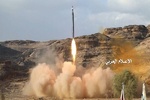










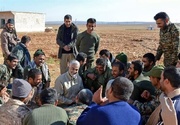
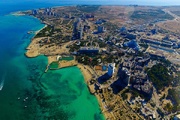
Your Comment